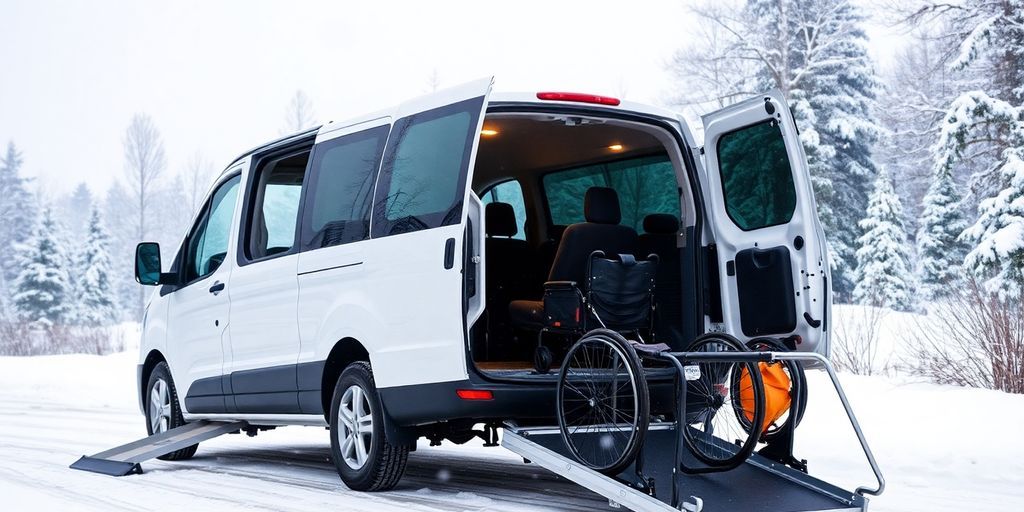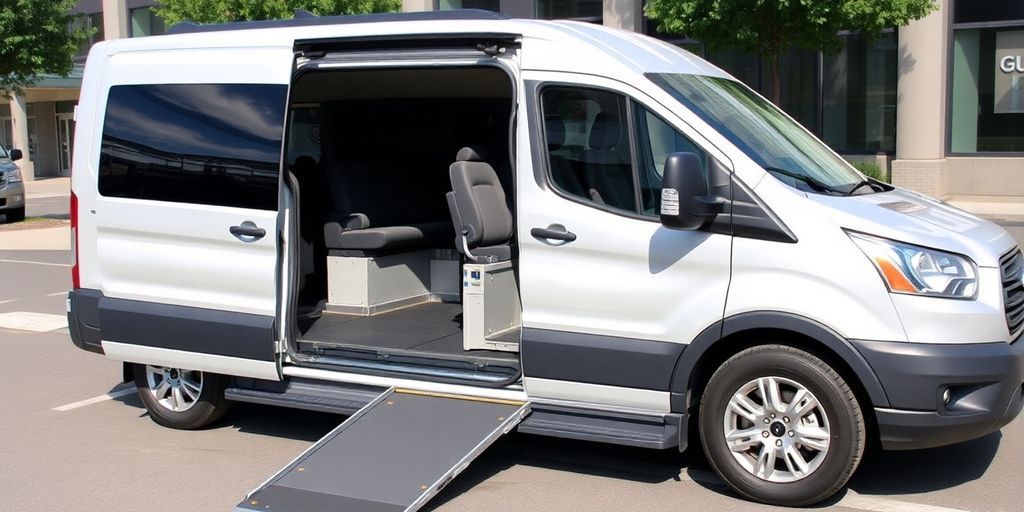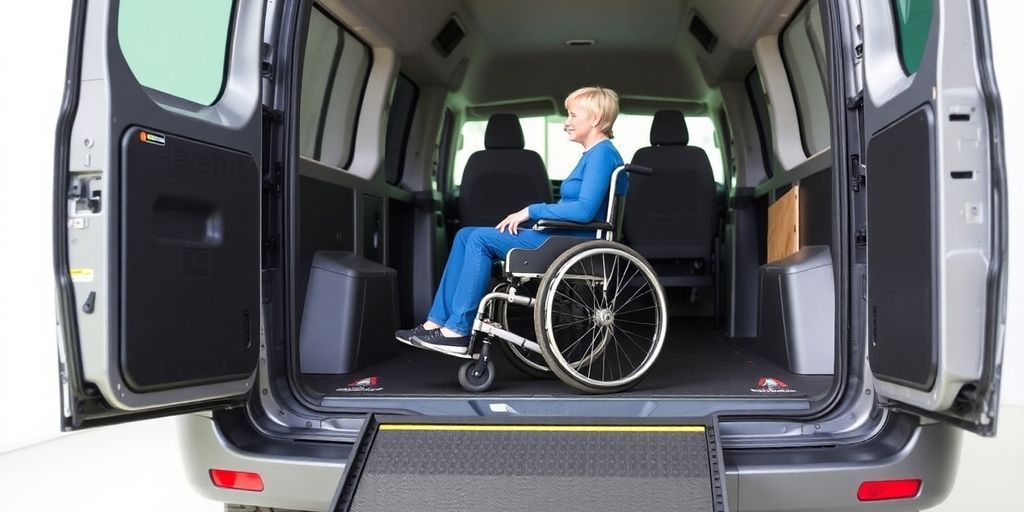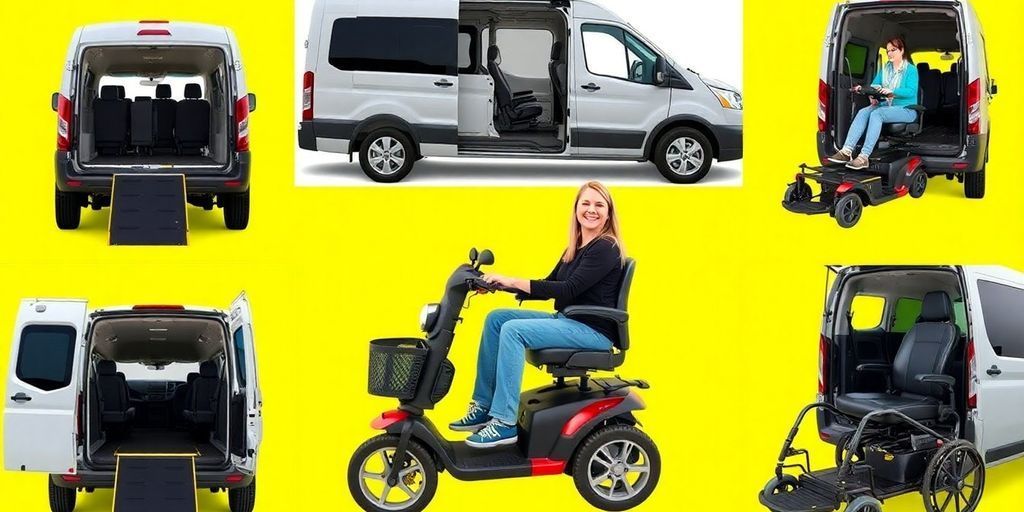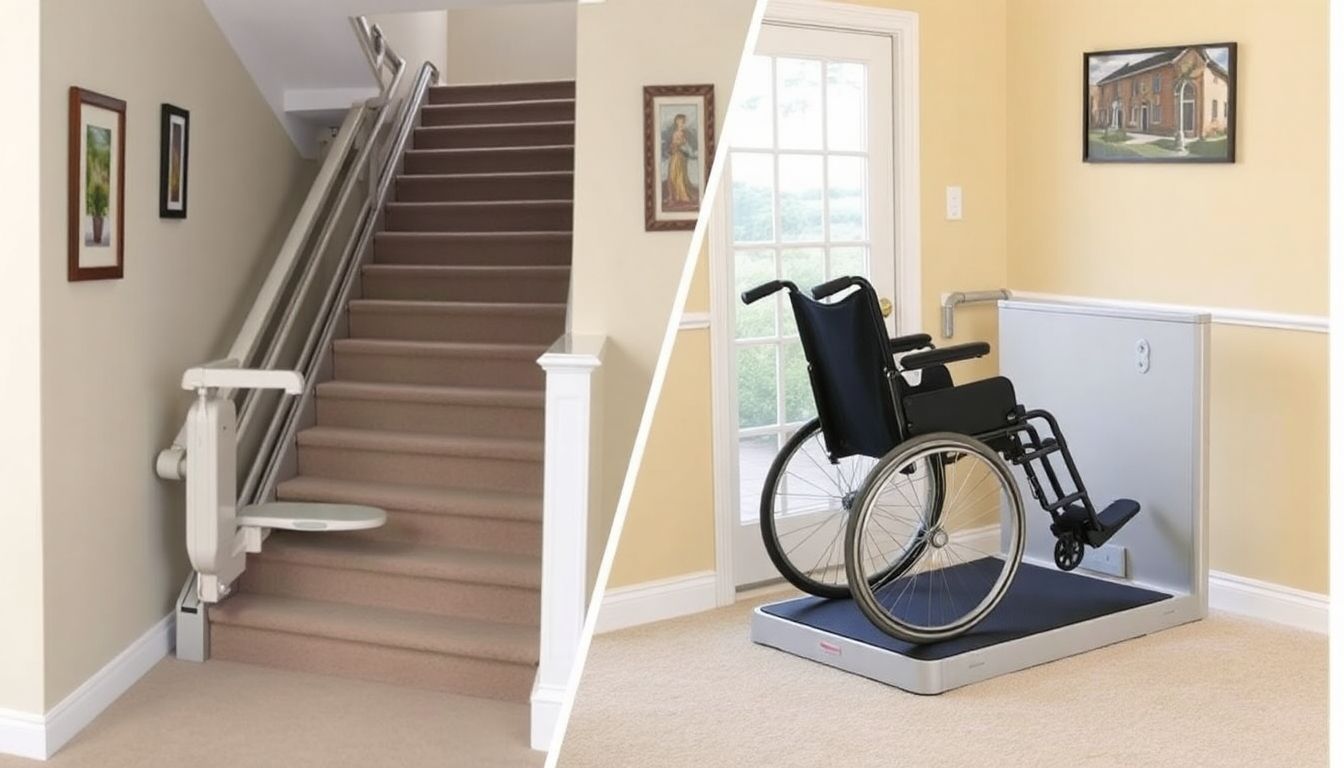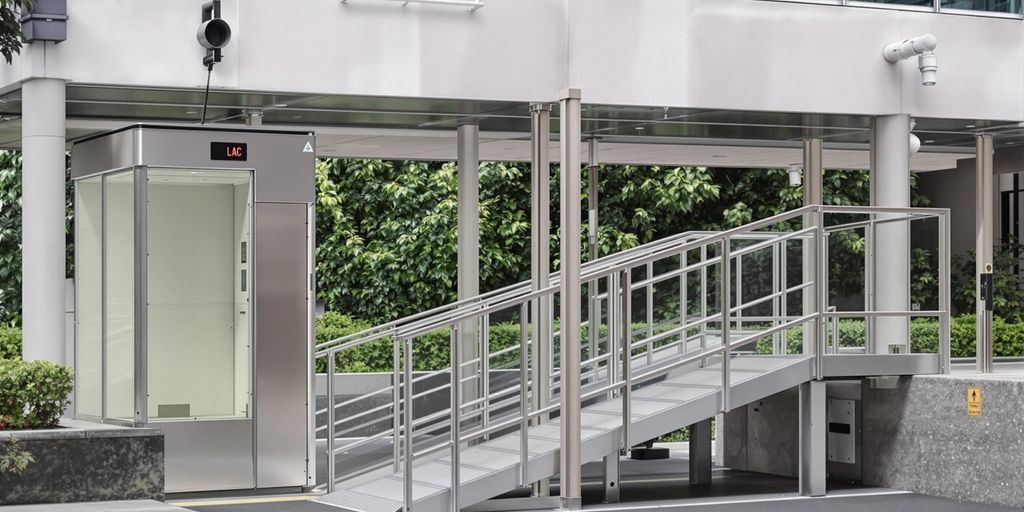The Pros & Cons of Rear-Entry vs. Side-Entry Wheelchair Vans
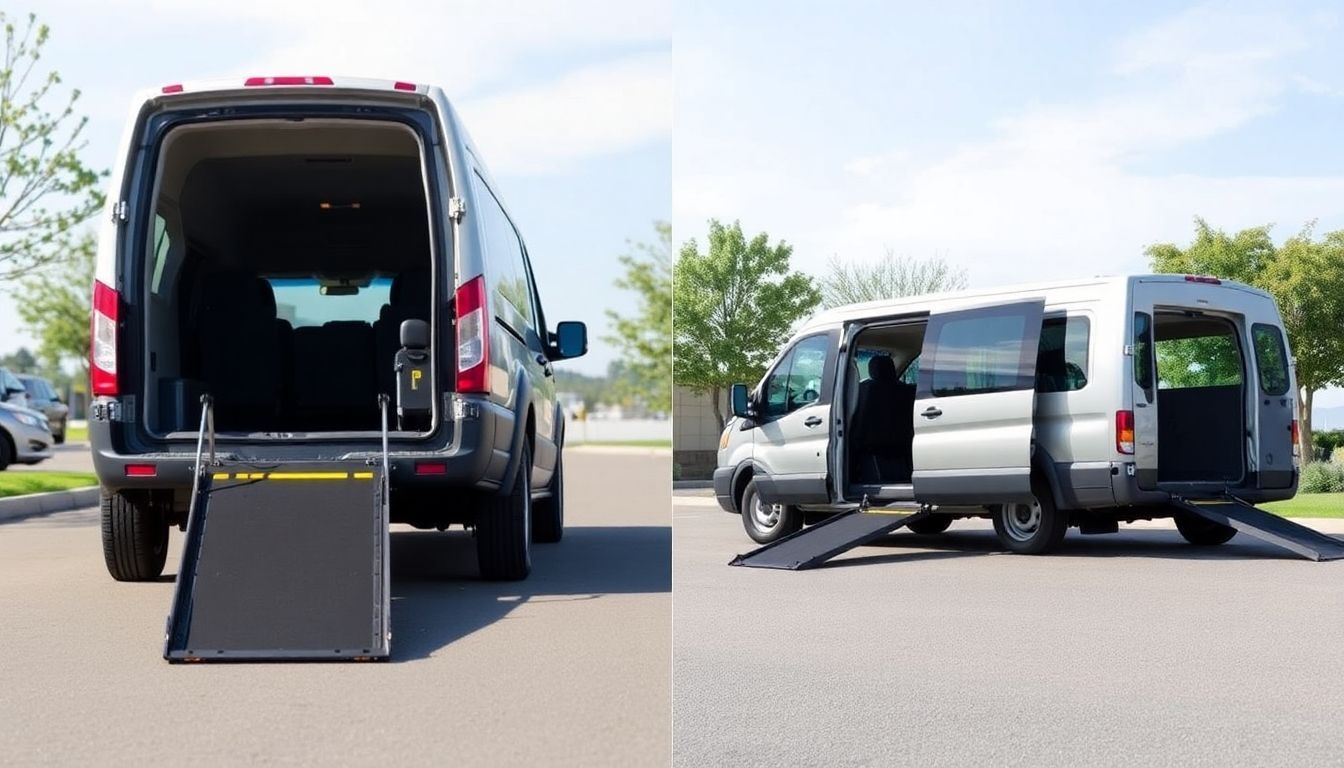
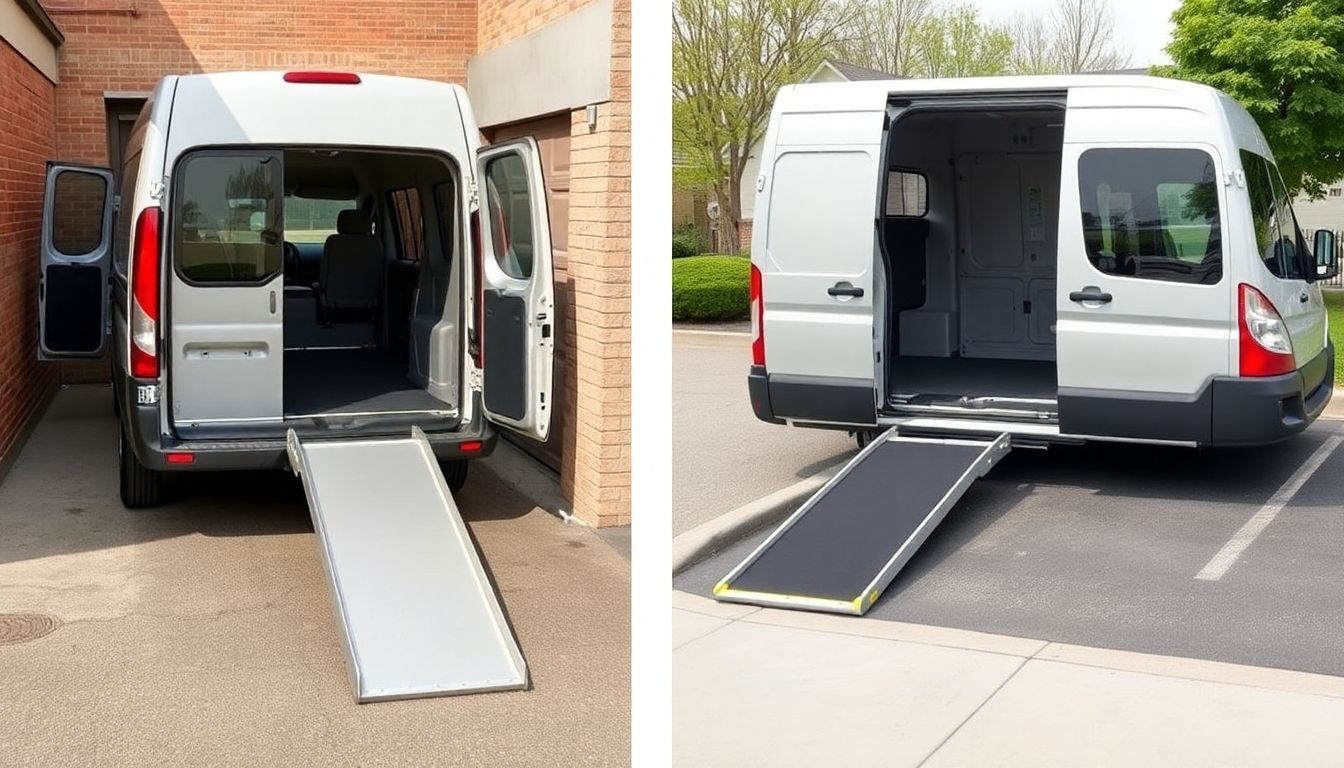
Choosing between rear-entry and side-entry wheelchair vans can be a tough decision. Each type has its own set of benefits and drawbacks that can significantly impact the user experience. Whether you prioritize ease of access, comfort, or parking convenience, understanding these differences is key to making the right choice for your needs. In this article, we’ll break down the pros and cons of rear-entry vs. side-entry wheelchair vans to help you find the best fit for you or your organization.
Key Takeaways
- Rear-entry vans often allow for larger ramps, making them suitable for bigger wheelchairs.
- Side-entry vans provide easier curb access, which is great for quick entry and exit.
- Parking with rear-entry vans can be more flexible since they don’t need extra space on the sides.
- Cost-wise, rear-entry options can be more affordable compared to side-entry models.
- Consider your specific needs, like the size of the wheelchair and how many passengers you typically transport.
Understanding Rear-Entry Wheelchair Vans
Rear-entry wheelchair vans provide an alternative to side-entry models, offering a unique set of advantages and disadvantages. They're a popular choice for many, and it's important to understand what they bring to the table. Rear-entry vans can be a great option for those who prioritize ease of parking and a less intrusive vehicle conversion.
Design Features of Rear-Entry Vans
Rear-entry vans are modified to allow wheelchair access through the rear of the vehicle. This typically involves a ramp wheelchair accessible vehicle that extends from the back, allowing the wheelchair user to roll directly into the van. Here are some key design elements:
- The floor is often lowered to increase headroom.
- Ramps can be manual or automatic, depending on the model and conversion package.
- Seating configurations may be altered to accommodate the wheelchair user and other passengers.
The beauty of rear-entry designs lies in their simplicity. By utilizing the rear of the vehicle, converters can often maintain more of the original vehicle structure, potentially leading to a smoother ride and fewer long-term maintenance issues.
Accessibility Considerations
When considering a rear-entry van, it's important to think about how it fits into your daily life. Here's what to keep in mind:
- Ambulatory passengers typically enter through the side doors.
- Rear access can be challenging in certain parking situations, like parallel parking.
- The ramp's angle and length can affect ease of use for some wheelchair users.
Common Models Available
You'll find rear-entry conversions available on a variety of vehicles. Here are a few examples:
- Minivans like the Chrysler Pacifica and Chrysler Voyager are popular choices.
- SUVs such as the Buick Enclave and Chevrolet Traverse can also be converted.
- The specific models and availability may vary depending on the conversion company and your location.
Exploring Side-Entry Wheelchair Vans
Side-entry wheelchair vans are a popular choice for many, and for good reason. They offer a unique set of advantages that can make life easier for both the wheelchair user and their companions. Let's take a closer look at what makes them so appealing.
Advantages of Side-Entry Design
Side-entry vans really shine when it comes to certain aspects of accessibility and convenience. One of the biggest advantages is the ability for a wheelchair user to potentially drive the van themselves. This is often not possible with rear-entry models without power transfer seats.
Here are some other key benefits:
- Curbside access: Side-entry vans allow for easy loading and unloading from the sidewalk, which can be a huge plus in busy areas.
- Parking flexibility: You don't need extra space behind the van to deploy a ramp, making parking easier in some situations. However, you will need extra space on the side.
- Potential for independent driving: As mentioned earlier, many side-entry vans can be modified to allow a wheelchair user to drive. Be sure to check the configuration of the vehicle you are considering.
Side-entry vans are often the go-to choice for individuals who prioritize independent driving and easy curbside access. The design allows for greater flexibility in certain parking situations and can simplify the process of entering and exiting the vehicle in high-traffic areas.
Passenger Comfort and Space
While side-entry vans offer great accessibility, it's important to consider passenger comfort and space. The ramp placement often means removing a row of seats, which can impact the number of passengers you can carry. However, once the ramp is stowed, there's usually ample room for storage. It's a trade-off, but one that many find worthwhile. The lowered floor conversion of a side-entry van allows for more headspace, comfortably fitting a passenger in a wheelchair into the vehicle.
Popular Side-Entry Models
When it comes to side-entry wheelchair vans, there are several popular models to choose from. These include the BraunAbility Dodge Grand Caravan and the Chrysler Pacifica. These vans are known for their reliability, accessibility features, and overall comfort. It's always a good idea to do your research and test drive a few different models to see which one best fits your needs.
Comparing Accessibility Options
Choosing the right wheelchair van is a big deal, and a key part of that is figuring out which entry type works best for your needs. Both rear-entry and side-entry vans have their own set of pros and cons when it comes to how easy they are to use.
Ambulatory Passenger Access
For folks who can walk but still need some assistance, side-entry vans often come out on top. The reason is simple: the standard doors make it easier to get in and out. Rear-entry vans, on the other hand, might require a bit of maneuvering around the ramp area, which isn't always ideal if you're not using a wheelchair. It really boils down to how much support someone needs when they're not in their chair.
Ease of Use for Wheelchair Users
When it comes to wheelchair users, both entry types have their advantages. Side-entry vans provide direct access to the interior, which can be great in tight parking spots. Rear-entry vans, however, sometimes offer more interior space to maneuver, especially when getting into the driver's seat. It's a trade-off, and what works best depends on the user's specific needs and abilities. When comparing wheelchair van quotes, consider how the layout affects daily use.
Ramp Configurations
Ramp design is another important factor. Here's a quick rundown:
- Ramp Angle: A lower angle makes it easier to get in and out, especially for manual wheelchair users.
- Ramp Width: Wider ramps offer more room to maneuver, which is helpful for larger wheelchairs.
- Manual vs. Automatic: Automatic ramps are super convenient, but manual ramps are often more affordable and reliable.
Think about where you'll be parking most often. Will you need to deploy the ramp on a busy street? Is space tight at home? These are the kinds of questions that will help you decide which ramp configuration is the right fit.
Cost Considerations for Wheelchair Vans
Price Differences Between Entry Types
When you're looking at wheelchair vans, the price can be a big factor. Generally, rear-entry vans tend to be a bit more affordable than side-entry models. This is mainly because the conversion process is often less complex. However, don't just jump at the cheapest option without considering your needs. The price difference can depend on several things:
- The specific model of van.
- The extent of the conversion.
- Any extra features you want.
Long-Term Maintenance Costs
It's not just about the initial price tag; you've got to think long-term. Side-entry vans, with their more complex conversions, might have higher maintenance costs down the road. This could be due to:
- More intricate ramp mechanisms.
- Lowered floor systems.
- Potential issues with modified components.
Rear-entry vans, because they often involve less modification to the vehicle's core structure, could potentially save you money on repairs over time. But, it's always a good idea to get a clear understanding of what regular maintenance will look like for any van you're considering.
Insurance and Financing Options
Getting insurance and financing for a wheelchair van is a bit different than a regular vehicle. Because of the modifications, insurance companies might have specific requirements or higher premiums. When it comes to financing, look for lenders who specialize in adaptive vehicles. They'll understand the unique needs and costs involved, and can help you find a payment plan that works for your budget. Don't be afraid to shop around and compare rates from different insurers and lenders to get the best deal.
Here are some things to keep in mind:
- Check with your current insurance provider first.
- Get quotes from multiple insurance companies.
- Explore financing options from specialized lenders.
Parking and Maneuverability Factors
Choosing between a rear-entry and side-entry wheelchair van involves thinking about where you'll be parking and how easy it is to move around in different situations. It's not just about the van itself, but also about how it fits into your daily life.
Parking Flexibility with Rear Entry
Rear-entry vans shine when it comes to parking in tight spots. You don't always need an oversized accessible parking space because the ramp deploys from the back. This means you can often park in regular spaces without worrying about blocking access for others or getting blocked in yourself. This is super helpful in crowded parking lots or older areas where accessible parking might be limited. Plus, you don't have to wait for a specific spot to open up. The ADA wheelchair requirements are important to consider when thinking about parking.
- Park almost anywhere without needing extra space on the sides.
- Ideal for tight parking situations.
- Reduces the need to wait for oversized accessible spots.
With a rear-entry van, you can pull into a spot and deploy the ramp straight out the back. This can be a lifesaver in busy areas where finding a suitable parking spot feels like winning the lottery.
Curbside Access with Side Entry
Side-entry vans are designed with curbside access in mind. The ramp extends from the side, allowing easy entry and exit onto sidewalks. This is especially useful in urban environments where you're frequently loading and unloading near sidewalks. However, it does require enough space on the side of the van to fully deploy the ramp, which can be tricky in narrow streets or crowded parking areas.
- Best suited for loading/unloading onto curbs or sidewalks.
- Requires sufficient space on the side for ramp deployment.
- Parallel parking can be easier with curbside access.
Impact on Urban Driving
Navigating city streets can be challenging regardless of the van type, but each has its quirks. Rear-entry vans might require more careful planning when parking on streets to ensure the rear ramp doesn't extend into traffic. Side-entry vans need enough clearance to deploy the ramp without hitting parked cars or other obstacles. Consider the typical driving and parking conditions you encounter daily. If you often find yourself in stop-and-go traffic or tight parking situations, a rear-entry van might offer more flexibility. If you frequently use curbside access, a side-entry van could be more convenient. Thinking about the wheelchair ramps is important for urban driving.
User Experience and Comfort
Driving from a Wheelchair
Okay, so let's talk about what it's really like to drive one of these vans from a wheelchair. It's not just about getting behind the wheel; it's about the whole experience. With rear-entry vans, you're often transferring to the driver's seat. This can be a pain if you're making lots of stops. Side-entry vans, on the other hand, sometimes let you roll right up to the driver's position, which is a huge plus for some people. The height and positioning of controls are also super important.
- Ease of transfer (or lack thereof)
- Visibility from the driver's seat
- Accessibility of controls (steering, pedals, etc.)
Passenger Experience in Different Configurations
Think about who's riding with you. Is it just you most of the time, or do you have family and friends? Rear-entry vans can sometimes feel a bit more cramped for other passengers because of the ramp taking up space in the back. Side-entry vans often have more flexible seating, letting you arrange things so everyone's comfortable. Side-entry wheelchair vans can be a game changer for passenger comfort.
The passenger experience is often overlooked, but it's a big deal. Consider things like headroom, legroom, and the overall feeling of spaciousness. Nobody wants to feel like they're crammed into a tin can, especially on longer trips.
Noise and Ride Quality
Let's be real, nobody wants a noisy ride. The ramp mechanism can sometimes be a source of noise, especially in rear-entry vans. It's worth paying attention to how well the ramp is insulated and how smoothly it operates. Ride quality is another factor. Suspension and overall vehicle design play a big role in how bumpy or smooth the ride feels. A smoother ride is always better, especially if you're dealing with back pain or other mobility issues.
- Ramp noise during operation
- Suspension and shock absorption
- Overall cabin noise levels
Specific Needs and Use Cases
Choosing Based on Wheelchair Size
Not all wheelchairs are created equal, and neither are wheelchair vans. Wheelchair size is a huge factor when deciding between rear-entry and side-entry vans. A larger, heavier power wheelchair might be a tight fit in a rear-entry van, especially if it has limited interior space. Side-entry vans often offer more headroom and wider doorways, making them better suited for bigger chairs.
Considerations for Multiple Passengers
Think about who else will be riding in the van. If you frequently travel with family or friends, a side-entry van might be the better choice. They usually have more flexible seating arrangements, allowing ambulatory passengers to enter and exit easily. Rear-entry vans can sometimes feel cramped, especially if there are multiple passengers. Here are some things to consider:
- Number of additional passengers
- Frequency of group travel
- Need for flexible seating
Evaluating Personal Mobility Needs
Ultimately, the best wheelchair van depends on your individual needs and lifestyle. Consider these points:
- Can you transfer easily from your wheelchair to a regular seat? If so, a rear-entry van might work fine.
- Do you prefer to drive from your wheelchair? Side-entry wheelchair conversions often provide this option.
- How important is parking flexibility to you? Rear-entry vans can be easier to park in some situations.
It's a good idea to test drive both types of vans and see which one feels more comfortable and convenient for your specific needs. Don't rush the decision; take your time and make sure you're making the right choice for your long-term mobility.
When it comes to specific needs and use cases, we understand that every situation is unique. Whether you're looking for solutions for school projects, personal tasks, or business needs, we have something for you. Don't hesitate to explore our website for more information and find the perfect fit for your requirements!
Final Thoughts on Choosing Your Wheelchair Van
In the end, picking between a rear-entry and a side-entry wheelchair van really comes down to your specific needs and lifestyle. Each option has its ups and downs. Rear-entry vans can be great for tight parking spots and larger ramps, while side-entry vans offer easier access from the curb and more flexibility for passengers. Think about how you plan to use the van, the size of the wheelchairs, and where you'll be parking most often. It’s a big decision, so take your time to weigh the pros and cons. Whatever you choose, make sure it fits your life and makes getting around easier.
Frequently Asked Questions
What are rear-entry wheelchair vans?
Rear-entry wheelchair vans let people in wheelchairs enter from the back of the vehicle. This design often has a ramp or lift that helps users get inside easily.
What are the benefits of side-entry wheelchair vans?
Side-entry wheelchair vans allow passengers to enter from the side. This can make it easier for ambulatory passengers to get in and out, especially when parked next to a curb.
Which type of van is better for parking in tight spaces?
Rear-entry vans are usually better for tight parking situations since they don’t need extra space on the side for the ramp.
Can you drive from a wheelchair in both types of vans?
You can drive from a wheelchair in side-entry vans, but not in rear-entry vans. Side-entry vans are designed for wheelchair users who want to drive.
How do costs compare between rear-entry and side-entry vans?
Generally, the price for rear-entry and side-entry vans is similar, but rear-entry options can sometimes be less expensive due to simpler conversions.
What should I consider when choosing between rear-entry and side-entry vans?
Think about your parking situation, the size of the wheelchair, how many passengers you need to transport, and whether anyone will be driving from a wheelchair.
First Responders & Military Discount + VA Approved
PRODUCTS AND SERVICES
North Georgia Mobility | All Rights Reserved | Powered By Flypaper | Privacy Policy

